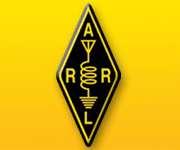2018 ARRL 160 Meter Contest
This was my third year running QRP (5 watts) in the ARRL 160 Contest from our cabin at Loon Lake, Washington (in EWA, north of Spokane). I had a real hoot! The local area was totally empty of neighbors, although I did observe a flock of turkeys, a couple of deer, one rabbit, and a pair of bald eagles during my weekend stay. Speaking of “cool”, the cabin is designed for summer-only use, which meant that operating when there were sub-freezing temperatures outside was something of a challenge. I set up a small electric heater under my chair to ward off frostbite. Setting up was a breeze since there was no snow on the ground. My two transmit antennas consisted of a dipole with its feedpoint up 60 feet in a pine tree and a 55-foot tall inverted L with two elevated radials for longer distances. Both antennas were near the cabin on top of a 90-foot hill surrounded by lake to the north, east, and south. I also set up a VE3DO receive loop based on the design posted by Jim Brown, K9YC, at http://audiosystemsgroup.com/VE3DO.pdf. This receive loop was amazingly effective – in fact, the results were jaw dropping with some signals that had been totally undetectable becoming fully copiable. Wow! Next year I’d like to install two more of these on the hilltop to cover additional directions. I used my Elecraft K3S along with spectral pan display. (I love this rig!) Being able to toggle between the two transmit antennas as well as the receive antenna was great. And having the option of diversity reception between the antennas is very cool. And the K3S’s internal preamp was more than adequate for boosting the input from the receive loop. Even though my dipole at Loon Lake is physically high (~150 feet above local terrain), on 160 meters this antenna is functionally an NVIS (near-vertical incidence skywave) antenna with not much power emitted at the lower elevation angles. My signal was strong into Oregon and Idaho, but working stations on the Midwest and East Coast was a real challenge. I have used inverted L designs at locations in California with great success, but here in Eastern Washington, things were different. Readings of my test transmissions from my inverted L via the Reverse Beacon Network seemed encouraging. But then it began to rain Friday afternoon. The inverted L was located inside a fairly dense grove of pine trees most at least 80- to 100 feet tall. With all that near-field wet foliage surrounding the inverted L, I noticed that incoming signals received via the inverted L were typically a couple S units weaker than received signals via the dipole. Not surprisingly, I made very few contacts during the contest with the inverted L. The dipole, which I fed with 200-feet of “window-line” ladder line, also had its limitations. As long as the ladder line was dry, I could make West Coast contacts without difficulty. But each period of rainfall coincided with my almost complete inability to make any contacts. I suspect this was probably due to dielectric losses introduced by the wet window line. Like last year, I could hear really, really well for most of the contest, which was a real pleasure. Band conditions this year were good with A and K indexes hovering between 2 and 3 most of the weekend. Since I was running QRP, my transmit signal wasn’t big — which meant that 80% of the folks that I could hear couldn’t hear me. But I still had fun and achieve a final count of 135 contacts in 39 sections. Not as good as some years, but still a real hoot! Plans for next year: 1. Move the inverted L away from inside the pine grove to a nearby meadow 2. Replace the dipole’s 200 feet of “window-line” feed with something that won’t become lossy when wet
-- K6EIBack











